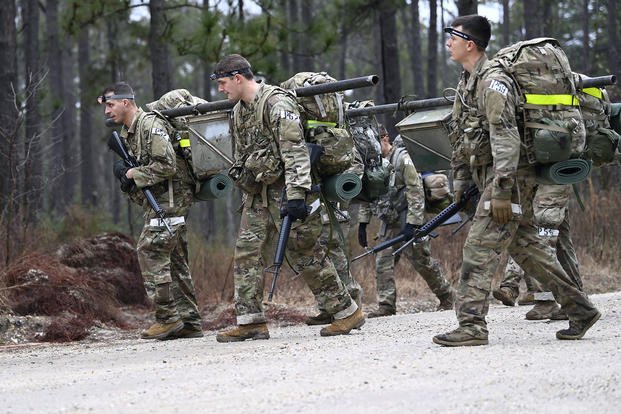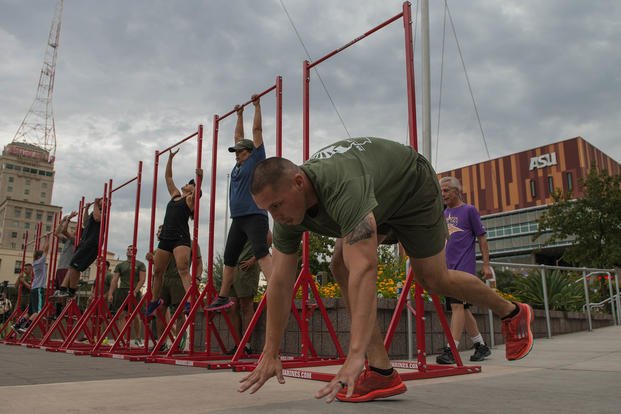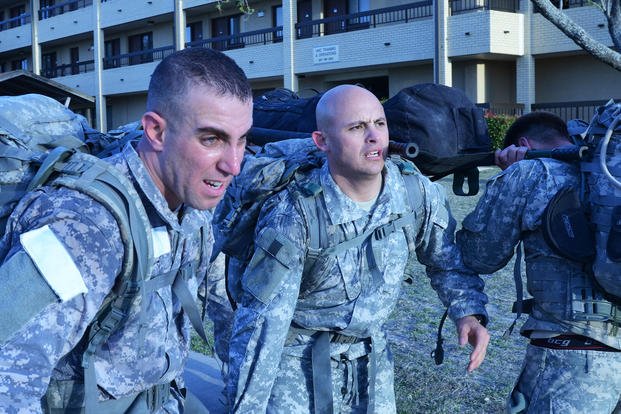Some conventional thinking would have you believe that if you can score 300 on the Army physical fitness test, the Cooper test, or whatever other PT test the military comes up with for vetting special-ops candidates, you're physically fit enough to endure the rigors of selection.
I'm here to tell you otherwise.
Don't get me wrong. I understand the need for the military's choice of physical fitness tests. It tests thousands of people annually. It needs to pick a method that will test the most relevant physical attributes for the job, which, in most cases, is aerobic power and muscular endurance.
Some might say that strength is more important, and I would agree. However, there is a certain level of strength required to express one's muscular endurance in the push-up, sit-up and pull-up. Not as much as I would like, but it's there. So, in a way, they test for strength, albeit in a very limited variety of movements.
They also need to choose a test that is easily administered almost anywhere in the world. Due to operational tempo, servicemen and women are not always surrounded by the luxuries found in your downtown recreational center or fitness facility. The test needs to be administrable with the sparsest of equipment in order to allow members to be tested regularly, regardless of where they are stationed.
Lastly, the military needs to choose movements that as many people as possible can perform with very little instruction. You might argue that the thruster and triple jump are more "functional," but the military probably would deem it too time-consuming to teach everyone proficiency in those movements, and I think they're right.
So running, push-ups and sit-ups are logical options. Is there room to improve? Probably. Does it serve its purpose while adhering to fiscal and logistical reality? Mostly.

Unfortunately for the special-ops candidate who is preparing himself for Navy SEAL BUD/S, Ranger Assessment and Selection, MARSOC Assessment and Selection, Special Forces Assessment and Selection (SFAS) or any of the other elite military units, they need a few more assessment tools in their pocket to determine where their weaknesses and strengths lie. That's what this article is all about.
Below, I describe five tests that I believe to be good indicators of a special-ops candidate's ability to finish selection physically. There is further testing and programming that should be done, but it falls outside the scope of this article. This is simply meant to upgrade your "prescription" of the standard military physical fitness tests as a way to gauge your fitness to something a little more robust.
200-Meter Max Dumbbell Farmer's Carry
For this test, I want candidates to find the most weight they can carry per hand while walking 200 meters. This test is done without putting the weights down or stopping and is done at a normal walking pace.
I recommend that athletes warm up to their max by performing 50-meter carries. Once they reach a weight with the 50-meter carries that they feel will be tough but doable for the full 200 meters, then I tell them to keep going for their max attempt.
I like to see athletes achieve at least 70 pounds per hand for this test. It's fairly self-explanatory as to why this is a good test for special-ops candidates -- or any tactical athlete, for that matter.

5 Rounds for Time: 350-Meter Row, 12 Burpee Pull-Ups, 8 Wall Walks
This is one of my favorite "grinder" tests for special-ops candidates. The goal is to perform five rounds of the following: a 350-meter row, 12 burpee pull-ups and eight wall walks.
All of the work in each movement must be completed before moving on to the next one. The movements chosen in this workout include:
- Upper-body pushing
- Upper-body pulling
- Bending
- Core
- Double leg movement patterns
This is a great full-body test. The movements are also tough in the sense that they require more drive from your central nervous system than movements, such as biking, walking lunges and sit-ups.
The standard for the burpee pull-ups is chest to deck at the bottom, jump to double leg squatting and jumping up to the pull-up bar and transitioning into a pull-up with chin over the bar and head neutral. The pull-up bar ideally should be placed six inches above max standing reach. Pull-ups are completed with a pronated grip (palms facing away from you).
The standard I like to see for this is sub-25 minutes. Sub-20 minutes is an excellent score, and sub-30 is acceptable. This mentally and physically demanding workout is a good test for the tactical athlete.
For Time: 400-Meter Swim in Pool
The standard environment is a 25-meter indoor pool for this test. The only caveat is that the athlete cannot touch or push off the sides of the pool throughout the test. This makes it slightly more demanding; the athlete can never get into a true rhythm, because they are forced to slow down, spin around and start back up every 25-meter length. In the real world, there is seldom anything to push off of in open water. Tactical athletes should develop the ability to manipulate their direction and movement efficiently without the use of external objects.
The goal for this test is sub-eight minutes. However, candidates preparing for BUD/S should aspire to exceed this standard.
For Time: 200-Meter Swim in Pool with Combats
The same test as above. Only this time, the special-ops candidate is required to wear combat pants, a T-shirt and combat shirt. The time goal for this test is sub-seven minutes.
For Time: 10-Mile Ruck March/Run with 90 Pounds
Lots of weight and lots of distance are involved for this test. The goal is sub-2 hours, 25 minutes, with an exceptional score being under 2:05. The terrain recommended for this test is hard-packed gravel with minor elevation change. Training can be done with larger hills or through vegetation, but in order to maintain a certain level of standardization for this distance and load, I recommend sticking to the aforementioned terrain for testing purposes.
There are many more tests that I like to use to gauge a tactical athlete's physical fitness and preparedness for selection. They include:
- Several horizontal and vertical upper-body pressing and pulling movements
- Core and bending tests
- Running across a broad range of times
- Single leg strength and shoulder strength -- two big ones for injury prevention
The tests above, however, are the ones that I have seen to have correlation over the years between a candidate's physical fitness and preparedness on selection.
It is not recommended that anybody begin fresh from a training hiatus by performing the above tests. There are also many other pieces that need to be in place in terms of foundational strength, mobility and training age before even attempting them. If you have a coach, they can guide you toward choosing an appropriate test, based on your current ability. If you train on your own, use your best judgment.
Enjoy.
Wes Kennedy is an ex-Special Forces operator and the founder of Elite Training Programs, which specializes in online fitness coaching for athletes. He draws on his time in the SOF community as well as years of self-education and fitness coaching to provide tactical athletes with the training tools needed to arrive as physically and mentally prepared as possible on selection.
Want to Learn More About Military Life?
Whether you're thinking of joining the military, looking for fitness and basic training tips, or keeping up with military life and benefits, Military.com has you covered. Subscribe to Military.com to have military news, updates and resources delivered directly to your inbox.



















